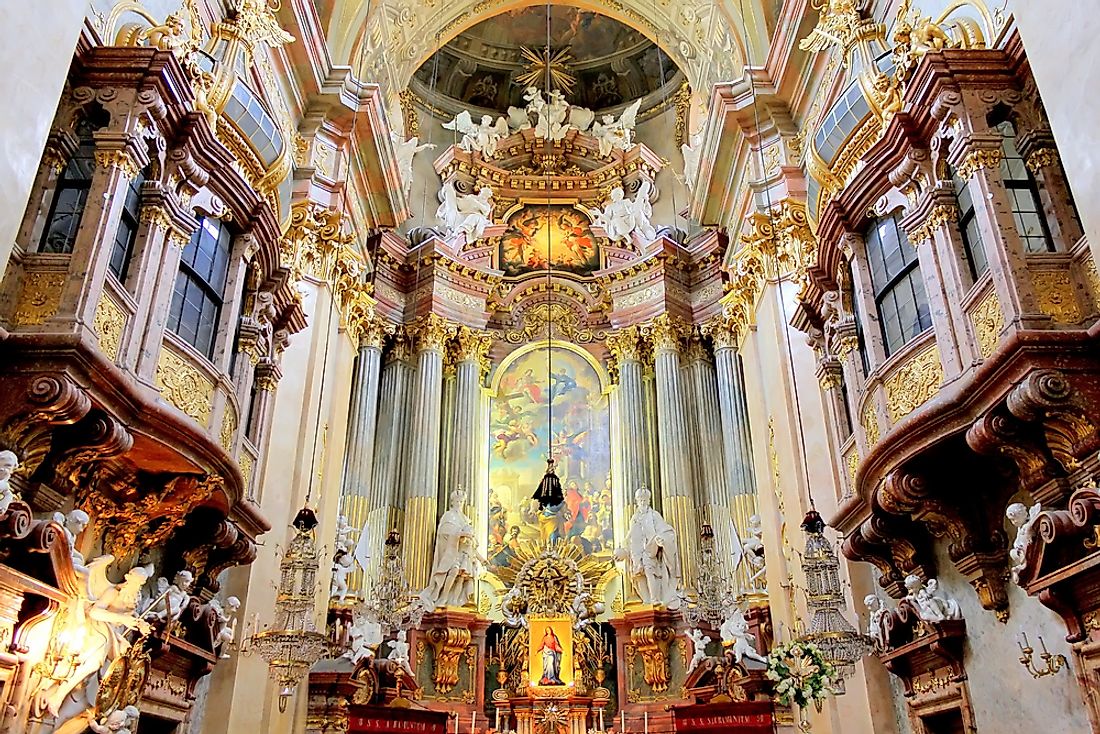Religious Beliefs in Austria

Despite increased secularism in daily life, the majority of Austrians still consider themselves Roman Catholics. People without religious faith have a significant following then Protestants, Muslims, and the Christians of the Orthodox faith. The country has the highest tolerance to religious freedom with legislation ran strictly on secularism. Despite the religious neutrality of the legal system in the country, the Austrian culture is greatly influenced by centuries-old Roman Catholicism. Besides, the law protects all types of religion in the country. Whether registered or not citizens enjoy the right to abstain from religious activities or identify with religion.
Roman Catholics
Roman Catholicism is the oldest and most predominant religious faith in Austria with a 61% of the total population identify with the faith. The centuries old religion is bound to strong traditions and a majority of church building within the city centers. History records that Vienna had once been the capital of the Holy Roman Empire.
The faith has beautiful shrines, cathedrals, and monasteries. The faith is more pronounced in the provinces of Tirol, Lower Austria, and Burgenland with urban centers having fewer religion affiliations. The history of the faith dates back to the time when the western part of Austria was part of the Roman Empire. The first evidence of the existence of the religion dates way back to the 174AD, and by the 3rd century, Christianity had spread.
By the 7th century, many dioceses and monasteries had been built in Western Austria by the Bavarians. The first churches and monasteries rose in the 8th and 9th century in East Austria. The 17th and 18th centuries were marked with a Catholic Baroque Culture in all of Austria. The Roman Catholic advocate for strict rules on homosexuality and as a result, some follower often abandons the faith to seek comfort in religions that are tolerant or become Atheists. The church stills celebrate biblical functions like Easter Monday, Epiphany, Whit-Monday, Christmas Day, Corpus Christ, and Immaculate Conception Day.
Atheist
The atheist population in Austria stands at approximately 12% of the country’s population. This trend is not surprising because Paganism movements have spread across Europe in the recent years. The cause is unknown, but some people have pointed that church taxation is the primary reason. The right of freedom also contributes to the rise of people with no faith especially the legal system that is neutral and secular in nature.
Eastern Orthodox Christian
The Eastern Orthodox faith constitutes 6% of the total population, and it came as a result of the South Slavic from the Balkans coming to Austria. The Serbs are the largest group of Orthodox Christians in the region. The large numbers of immigrants from Yugoslavia have also contributed the high population.
Sunni Muslim
Over the last eight decades or so Islam has had noticeable influence in the religious facet of Austria. Muslims constitute 6% of the population in the country long ruled by Catholicism and then secularism, the survival and spread of the faith are fascinating. The reason could be attributed to Austria's being the first western nation to recognize and tolerate Muslims. Islam rubbed shoulders with the country in the 18th century, during the war with Turkey.
Lutheran Christian
The faith has a small following in the country making up 4% of the total population.In 2001 the population was slightly higher but in 2015 there was 1% decrease in the membership of the Lutheran faith.
Other Religious Groups
Other minority religious groups all make up 11% of the total population. Like most multi-cultural nations with religion tolerance, Austria also has Buddhist religion in the country. Jews also exist in the country and by 1938 the Jewish population was about 200000, but then the Nazi Germany annexed Austria, and the religion was almost wiped out through emigration and the Holocaust. Today the Jewish population in Austria is about 7000 a result of postwar immigrants and not the Austrian-born Jews. The freedom of worship in Austria is impressive. Every citizen has the right to abandon or identify with the region of choice without criticism. The social cohesion of the country is high irrespective of faith or religious conviction. A significant number of atheists in Austria could be due to the taxation of churches by the government at approximately 1% of income.
What Religion Do Most People In Austria Follow?
| Rank | Belief System | Share of Modern Austrian Population |
|---|---|---|
| 1 | Roman Catholic Christian | 61% |
| 2 | Atheist | 12% |
| 3 | Eastern Orthodox Christian | 6% |
| 4 | Sunni Muslim | 6% |
| 5 | Lutheran Christian | 4% |
| 6 | Agnostic, Jewish, Hindu, Buddhist, Calvinist, or Other | 11% |











